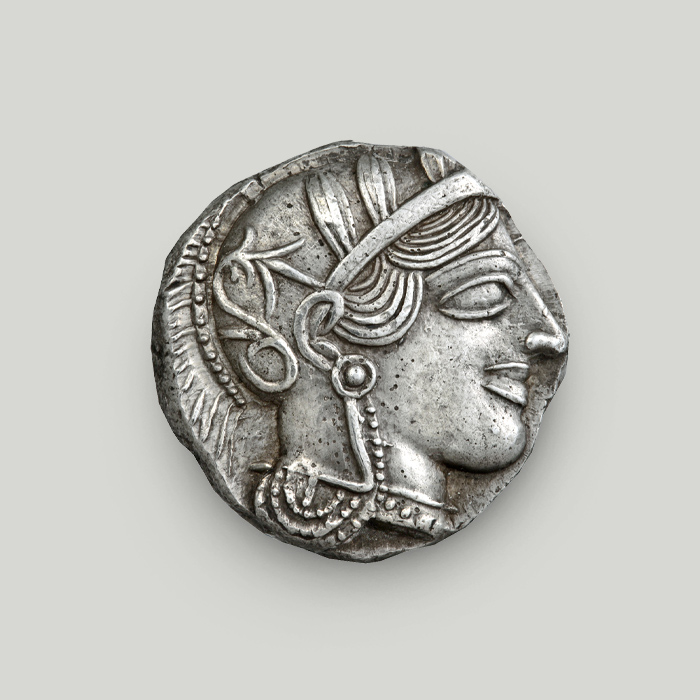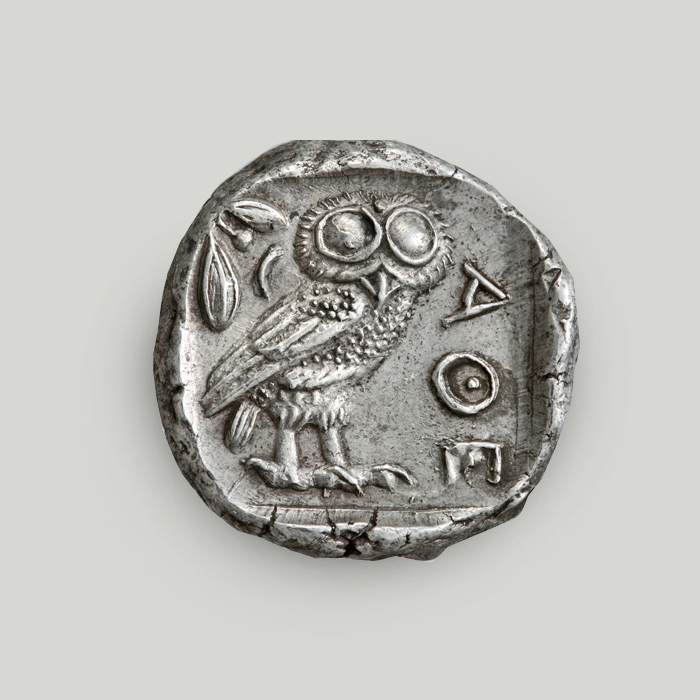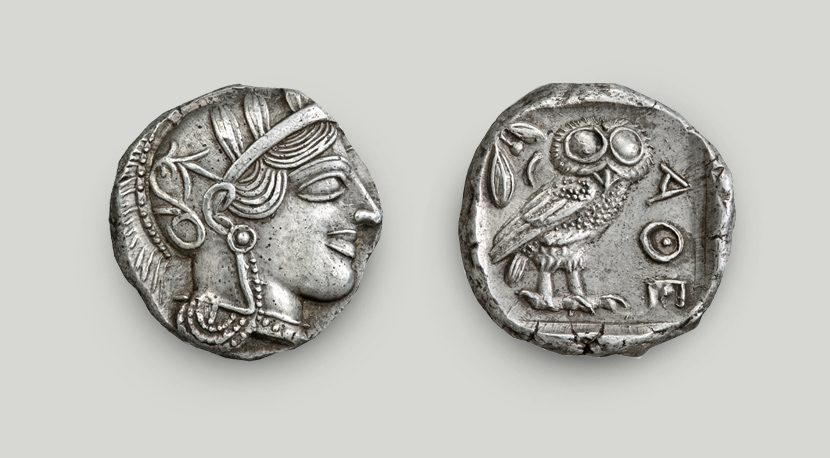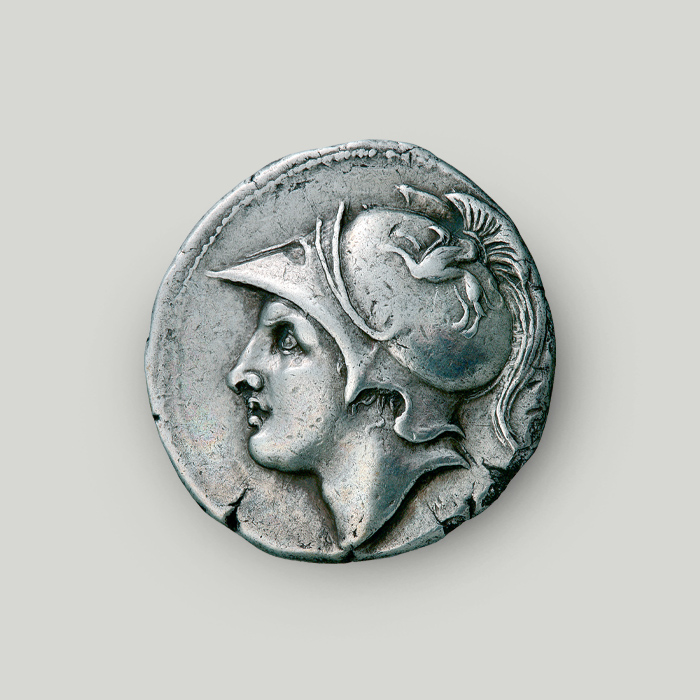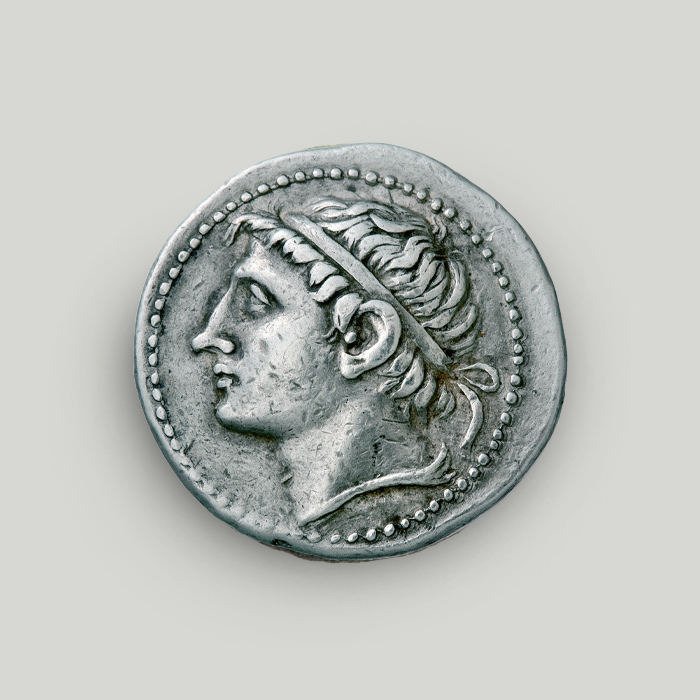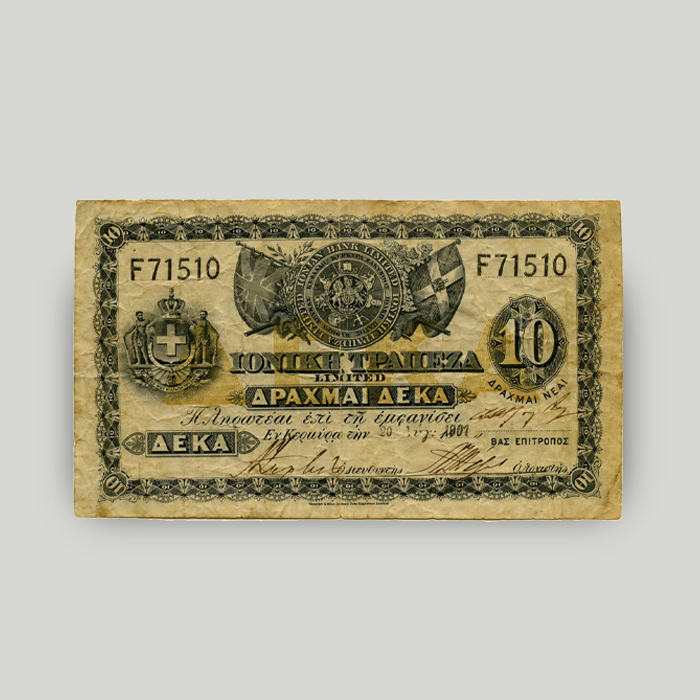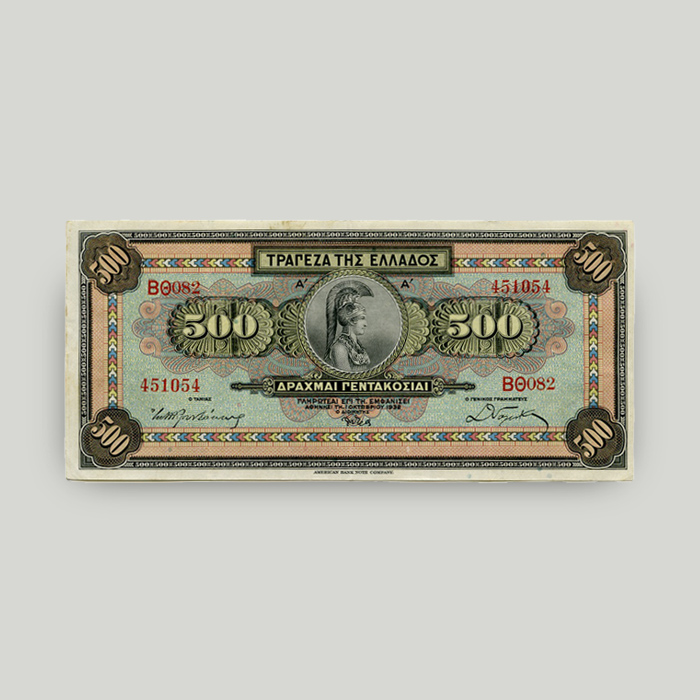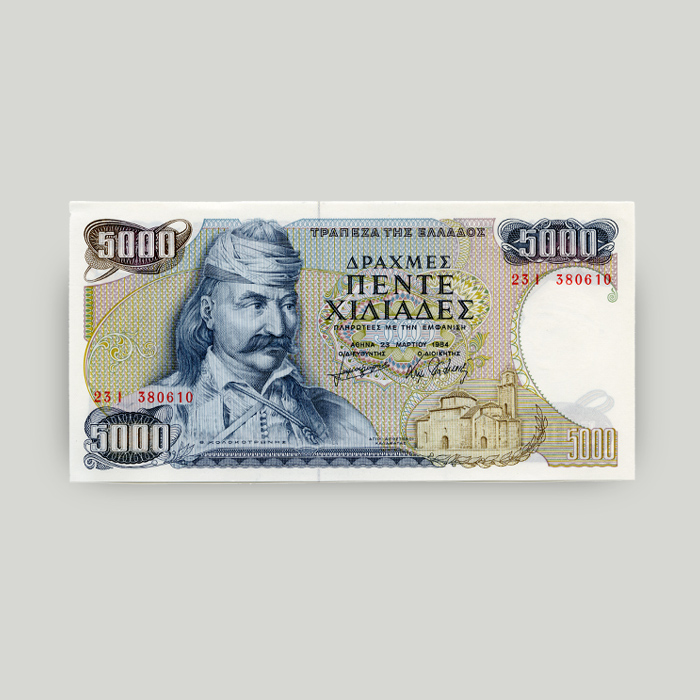Silver tetradrachm, Athens
The Athenian silver tetradrachm was the best-known coin in the ancient world. It was the strongest currency for 2 consecutive centuries in antiquity, across the then-known world. The coin was dubbed “owl” (glaux in Ancient Greek) from the type on the reverse. The national side of the 1-euro coin is the reverse of the Athenian silver tetradrachm.
Obverse
Head of Athena wearing round earrings and Attic-style helmet with a floral and olive leaf decoration. The right-side view of the goddess’ head includes a depiction of the entire almond-shaped eye. Her lips are curved into the half-smile that is typical of Archaic Greek art.
Reverse
Owl with its body facing right, head turned to face the front and wings folded. On the top left, an olive branch and a crescent. On the right, the first letters of the city’s name ΑΘΕ (ATHE) are struck vertically to the bottom of the type. The entire type is enclosed in an incuse square.
The first Athenian tetradrachms
Over the years 515-510 BCE (or in 508 BCE according to some), Kleisthenes laid the groundwork for his democratic reforms. After a short adjustment period, the Athenians decided to adopt a new, consistent currency. They kept the new currency until the 1st century BCE, when they stopped minting silver coins.
The obverse of the first new tetradrachms depicted the head of Athena, the patron goddess of the city of Athens, while the reverse depicted an owl, her sacred bird. The Athenian tetradrachm was soon dubbed “owl”, as mentioned in ancient sources.
In 479 BCE, following their victory over the Persian army, the Athenians added new elements to their tetradrachm. On the obverse, the goddess’ helmet was adorned with flowers and olive leaves. On the reverse, a crescent was added under the olive branch – a branch from Athena’s sacred tree.
The glaux as a strong currency
In 478-477 BCE the Athenians established the Delian League. Officially, their purpose (a pretence according to ancient historian Thucydides) was to take revenge on the so-called “barbarians” by wreaking havoc in the Persian king’s land.
Many city-states joined the League and paid a standard contribution to the League’s common fund. The treasury, originally on the island of Delos, was moved to Athens in 454 BCE. According to the sources, the fund amounted to 5,000 talents (i.e., 7,500,000 tetradrachms) at the time.
So, the Athenians established hegemony over the other members and became major players in the political landscape. The Athenian navy ruled the Mediterranean. A common market was developed, where the owls were widely accepted as common currency.
The Athenian tetradrachm became the strong currency of its time.
A currency without borders
The silver mined from Lavrion, along with the Athenian state’s rapid expansion, contributed to making Athenian tetradrachms ubiquitous in the markets of the then-known world. The prestige and reliability of the issuing authority warranted that the currency would be accepted by and large.
The owls travelled beyond city-state borders and were widely used for transactions as far as Sicily and Egypt, and even Bactria and Babylon.
The Athenian owls remained, in modern terms, the strongest international currency for 2 consecutive centuries in antiquity.
The role of Athens in coin minting
Athens was the most powerful and important city-state in classical antiquity. It is considered the cradle of social and political reform, and a hub of artistic and literary inspiration and overall creativity.
Athens conceived democracy and established it as a political system over the 6th and 5th centuries BCE. Democracy safeguards fundamental human rights and provides the foundation of all western culture.
Athens played a significant part in the history and development of coin minting. More than 2,500 years ago, this city-state pioneered concepts that are still considered ground rules for sound monetary circulation, i.e.:
- Establishing a standard combination of subjects to be depicted on the obverse and reverse of each coin. In the case of the Athenian silver tetradrachm, the patron goddess and its sacred symbols were variously combined on both sides of the same coin.
- Printing the first letters of the issuing authority’s name on the coin.
The Athenian owl today
Amazingly, this very ancient coin has survived to this day. Its reverse is now the national side of the 1-euro coin issued by the Bank of Greece.
Fractions and etymology
As suggested by its name, the tetradrachm equalled 4 drachmas. Each drachma equalled 6 obols.
Before the invention of coins, people used iron spits of 1-1.5 meters in length for their daily transactions.
The spit was called ovelos, and 6 of them were considered a standard handful. This handful was later dubbed “drachma”, as it could be grasped (drattomai in Ancient Greek) in a person’s fist.
When coins started to circulate, the word ovelos (the previously used spit) changed to ovolos (“obol” in modern numismatics) and was used to denote the value once held by 1 spit, i.e. 1/6 of a drachma.
The coin in our publications
The Athenian silver tetradrachm is mentioned in Athenian Owls by Dr Dimitra Tsangari. The publication follows the history of coins. It also includes photos of 30 coins from the Alpha Bank Numismatic Collection.
Buy the publication Athenian Owls on the Alpha Bank e-shop.
The Alpha Bank Numismatic Collection is not open to the public.
Research visits to the Numismatic Collection can be organised upon request.
Contact us to book your visit.
